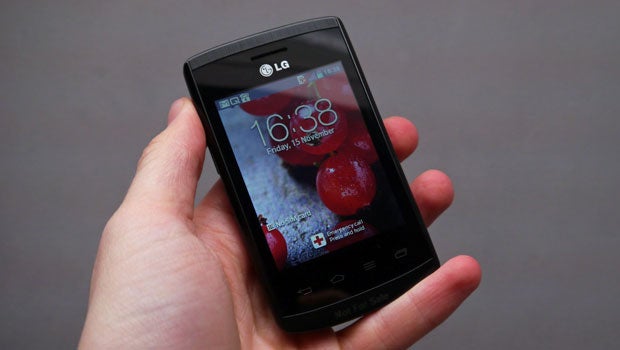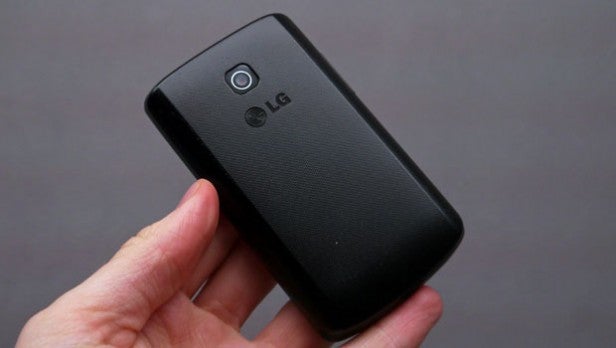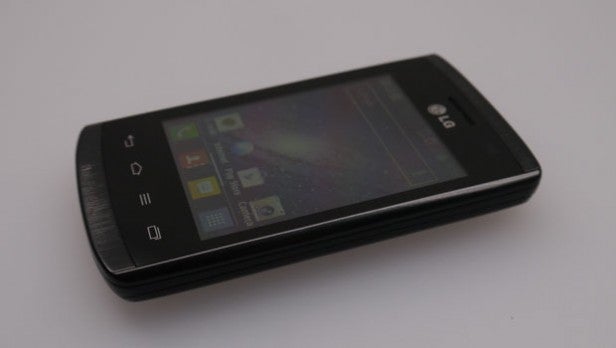LG L1 II Review
LG L1 II Review
A £50 smartphone let down by its woeful screen and poor camera.

Sections
- Page 1 LG L1 II Review
- Page 2 Performance, Software and Camera Review
- Page 3 Call Quality, Battery Life, Value and Verdict Review
Verdict
Pros
- Super cheap
- Solid build quality
- Decent call quality
Cons
- Dire screen
- Poor camera
- Basic features
Key Specifications
- Review Price: £50.00
- 3-inch 320 x 240p screen
- 2-megapixel camera
- 1GHz processor
What is the LG L1 II?
The LG L1 II is an entry-level smartphone and the smaller sibling to the LG L3. It’s a true budget phone that costs £50 SIM-free or £11 a month on contract, has a small 3-inch screen and a basic 1GHz processor. It’s most direct rival is Vodafone Smart Mini. Is the L1 II a bargain or simply just basic? Read on to find out.
SEE ALSO: best cheap smartphones you can buy

LG L1 II: Design
The LG L1 II isn’t the most aesthetically pleasing of smartphones, but in the entry-level scene it is one of the most robust. The phone’s plastic build, although squat and boxy in design, feels surprisingly solid and sturdy in the hand. The L1 II suffers from no undue bend or creaking when placed under excessive amounts of pressure. In fact it feels considerably more convincing in its design than the high-end flagship likes of the Samsung Galaxy S4 or LG G2. What’s more, the dimpled, textured design of the plastic body gives the phone a bit of added grip.
This solid build comes at a cost, however, as at 12.2mm thick and 105g in weight, the LG L1 II feels chunky for such a small phone. Actually, the LG L1 II’s design is best described as dense. This additional bulk isn’t all bad, though. Given the phone’s compact size, the increased weight makes it feel reassuring.
Our only serious gripe is that the L1 II’s volume controls fall in the way of your fingers whether holding the phone in your left or right hand. While this is something that is hard to avoid given the phone’s compact nature, it can make the L1 feel a little clumsy. Fortunately, there is enough resistance in the buttons to avoid most accidental presses.

LG L1 II: Screen Quality
As you would expect on a sub-£50 smartphone, the LG L1 II’s screen quality leaves a lot to be desired. It’s not just poor when compared with more expensive phones, however; the L1 II’s screen is below average compared to many cheap phones, too.
The 3-inch panel features a meagre 240 x 320 pixel resolution and a lowly 133 pixels per inch image. At the same sub-£50 price point, the 3.5-inch Vodafone Mini offers a 320 x 480 pixel resolution display. This might sound like a small difference, but the reality is more noticeable
The LG L1 II’s screen quality is frankly dire. Colours are diluted and text is so fuzzy that it’s a considerable strain on the eyes. Viewing angles are terrible, too – anything off a direct line of sight leaves things appearing even darker and more blurred than before, as if peering through through an muddy puddle.
In its favour, the LG L1 II’s screen is highly responsive. It responds well to all single or multi finger commands in a prompt and seamless fashion. This is good, but it’s small comfort compared to the woeful visual quality.
How we test phones
We test every mobile phone we review thoroughly. We use industry standard tests to compare features properly and we use the phone as our main device over the review period. We’ll always tell you what we find and we never, ever, accept money to review a product.

